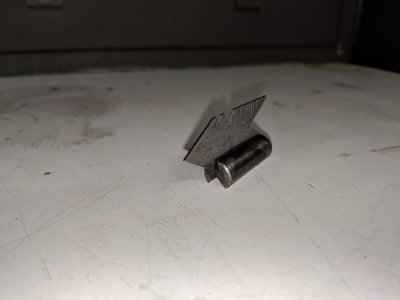Excellent info again!!
I am still gathering the devices specific to threading. Any suggestions on thread gauges and fishtails and thread mics? Are the gauges and fishtail ok to get new cheap ones or does the quality vary enough to warrant a name brand set? Are the Mics for threading good bad, where to start with equipment?
Thanks
All the thread pitch gauges from the major makers are fine. I prefer Starrett but have B&S, too, and it works fine. I mostly use the Starrett 472; it goes from 4 to 84 tpi. I also use a Starrett metric gauge, too. Check ebay or Amazon.
Fishtails are also pretty accurate. I use a Starrett 391 but also have one from Mitutoyo and several from PEC. All are about the same. Check Amazon for a Mit - its accurate.
Thread mics do vary in quality but not enough to warrant spending major bucks on a high quality set. I own a 0-1 and 1-2 set from Tesa - you don't even want to know what that retails for. If I were you, I would buy an import like this one:
https://www.ebay.com/itm/0-1-SCREW-...895275?hash=item519992f22b:g:nDAAAMXQrvpREJLy
You couldn't even buy a single anvil from Tesa for what that Shar's set cost and I doubt you will see a difference in outcome.
You should be clear that you do not need to use thread mics for a rough and ready thread; cutting to fit will work fine for that. But when you need to cut a thread to tight tolerances or to fit an existing part and you need it to fit right the first time, that is when you pull it out. You can also use the three wire technique. I no longer do this because I absolutely hate those things, or maybe they hate me. Either way, I'm constantly dropping or bending them so I went to thread mics.
Bear in mind that when cutting threads to tighter tolerances you need to turn the blank to the right size for that class, then cut the thread to a pitch diameter range. That might be beyond the scope of this thread. If you need more details, start a thread of your own and we can go at it there.


